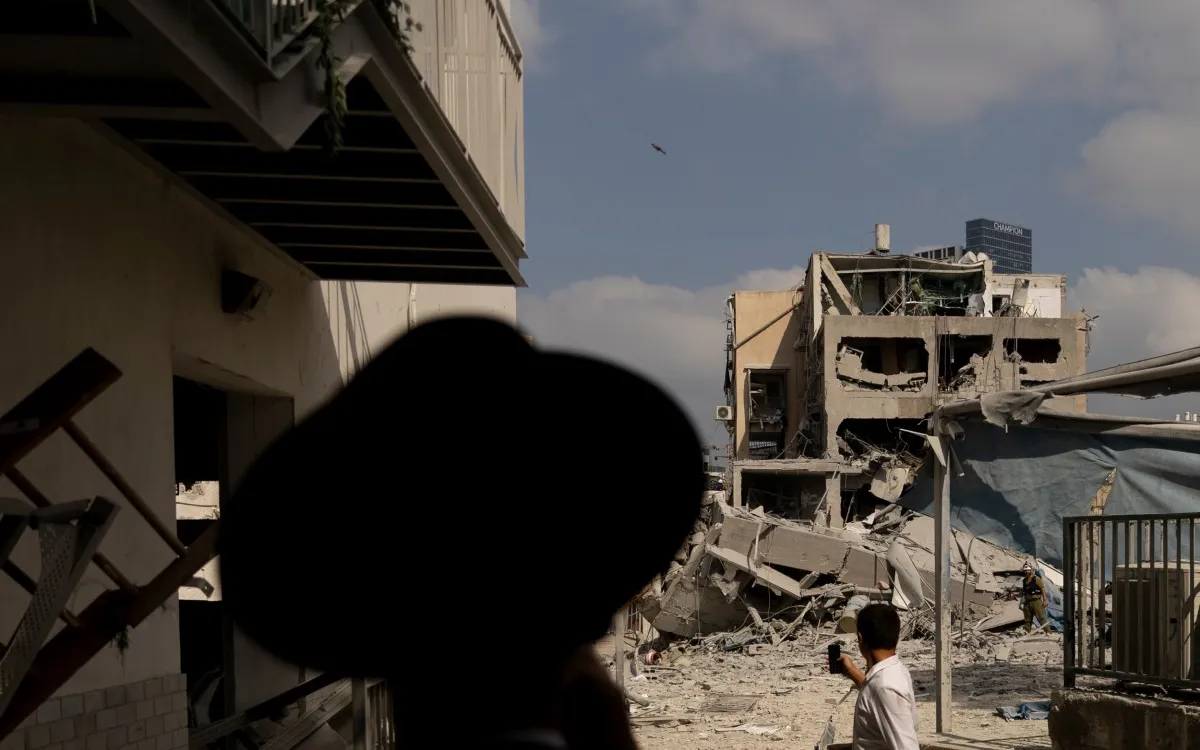
On Friday, Israel initiated a series of air attacks targeting Iran, prompting Tehran to respond with a barrage of retaliatory strikes. This escalation saw some Iranian ballistic missiles successfully breach Israel's missile defence systems, striking key locations within the country. The ongoing conflict has resulted in the tragic loss of over 240 lives in Iran, including 70 women and children, while Iran's retaliatory strikes have claimed at least 24 lives in Israel and injured hundreds.
Many of Iran’s missile attacks have impacted civilian areas in central Israel, leading to significant infrastructural damage. Notably, Israel’s fortified military headquarters in Tel Aviv, known as the Kirya, sustained damage although it was relatively limited. In a bold statement, Iran claimed to have hit a military intelligence center and a Mossad operations planning facility, showcasing the effectiveness of its missile capabilities against one of the world's most sophisticated defence systems.
Israel's air defence strategy primarily revolves around its renowned Iron Dome system. This multi-tiered defence architecture is designed to intercept and neutralize incoming aerial threats. As explained by Alex Gatopoulos, defense editor at Al Jazeera, the Iron Dome functions as the base layer of Israel's comprehensive air defences. It detects incoming projectiles, tracks their paths, and intercepts them with impressive accuracy, boasting a claimed effectiveness rate of 90%.
The Iron Dome became operational in 2011, specifically developed to counter rocket attacks experienced during the war with Hezbollah in 2006. In addition to the Iron Dome, Israel employs other advanced systems such as the Barak-8 for medium-range threats, the Terminal High Altitude Area Defense (THAAD) for various ballistic missile ranges, and David's Sling for longer-range threats. These systems work in unison to create a formidable barrier against aerial threats.
To counter long-range missile threats, Israel utilizes the Arrow-2 and Arrow-3 interceptors, specifically designed to target missiles like those launched by Iran. This multi-layered approach combines both ground-based systems and air-to-air missile defence, utilizing combat aircraft such as helicopters and fighter jets to intercept drones and other aerial threats.
Israeli air defence systems consist of three main components: a radar system to detect incoming threats, a command and control center to assess and coordinate responses, and launcher systems equipped with interceptor missiles. Each incoming missile is tracked by radar, allowing the control center to decide the most effective engagement strategy. Typically, two interceptor missiles are launched for each incoming threat to maximize interception chances, although the exact number of interceptor missiles available to Israel remains undisclosed.
Despite Israel's robust defence systems, some Iranian missiles have successfully penetrated these fortifications. An Israeli military official recently reported an interception success rate of "80 or 90 percent," indicating that a portion of Iranian missiles have evaded interception. This raises questions about how Iranian forces are managing to bypass such sophisticated mechanisms.
One plausible strategy employed by Iran is the exhaustion of Israel's interceptor missiles. As noted by Marina Miron, a postdoctoral researcher at King’s College London, "No system shoots down 100 percent of missiles," indicating that limited interceptor resources can be overwhelmed. Additionally, the deployment of hypersonic missiles presents a new challenge for air defence systems due to their high speed, reducing response time significantly. The Fattah-2 missile, equipped with a hypersonic glide vehicle (HGV), showcases Iran's advancements in missile technology, making interception increasingly difficult.
Moreover, Iran's arsenal includes cruise missiles that can alter their trajectory, further complicating interception efforts. While slower than ballistic missiles, these cruise missiles fly at low altitudes, allowing them to evade traditional air defences effectively.
Air defence systems can also be challenged through tactics such as overloading detection systems with decoy missiles and drones. These decoys may appear as threats on radar but serve to deplete interceptor resources, facilitating the passage of actual missiles. Additionally, some missiles are designed with radar suppression technologies, rendering them undetectable by air defence systems.
As the conflict between Iran and Israel continues to unfold, questions remain regarding the sustainability of missile stocks for both nations. The current scenario can be described as "attritional," with both sides seeking to outlast the other. The geographic distance between Iran and Israel complicates aerial operations, with the nearest point being roughly 1,000 km (620 miles) apart. This distance presents logistical challenges for Israeli air operations, particularly without the support of air-to-air refueling.
In conclusion, the ongoing conflict highlights the evolving nature of aerial warfare and missile technologies. As both Iran and Israel continue to refine their military capabilities, the implications of this confrontation extend beyond immediate tactical outcomes, potentially influencing broader regional stability.